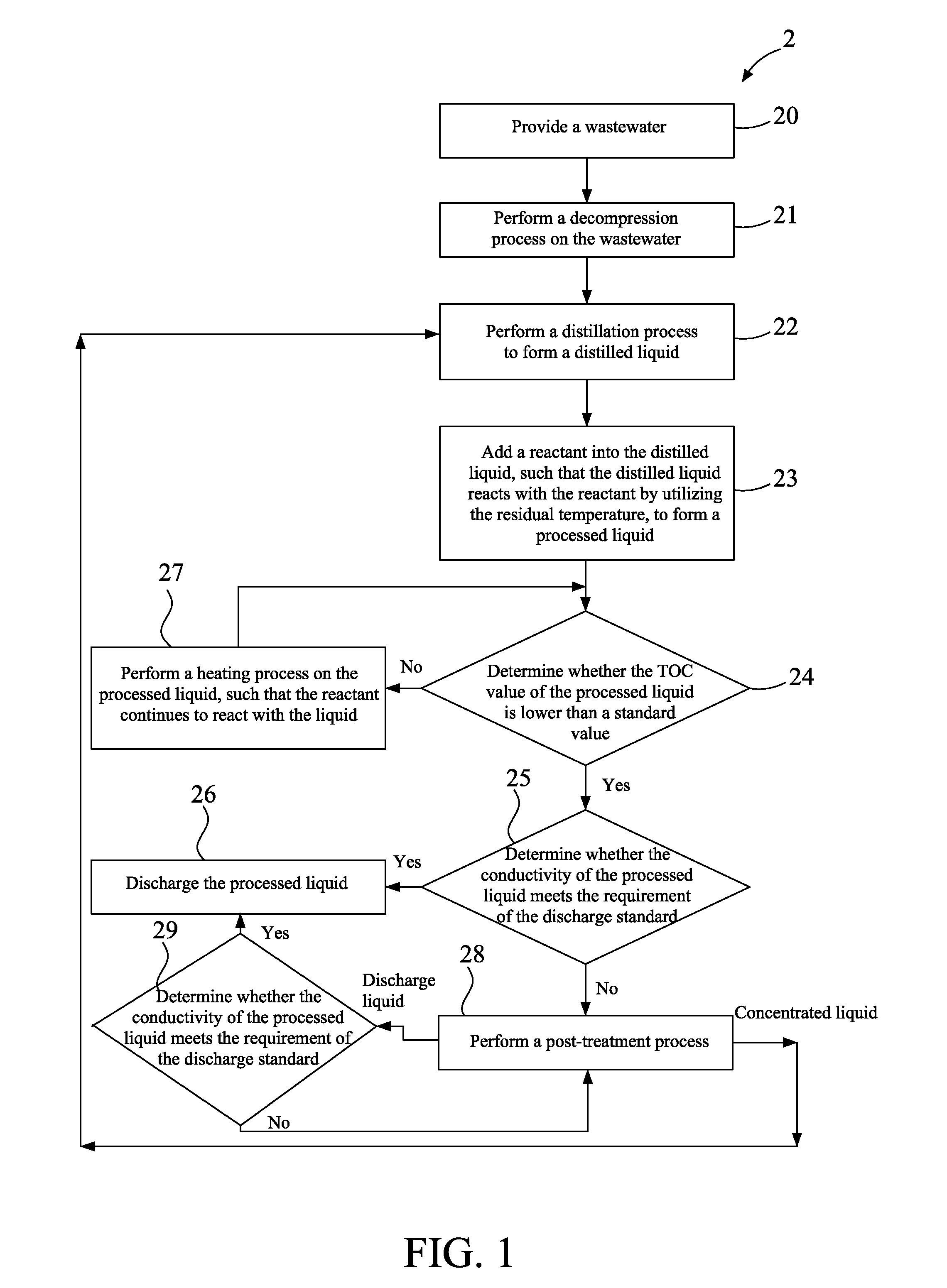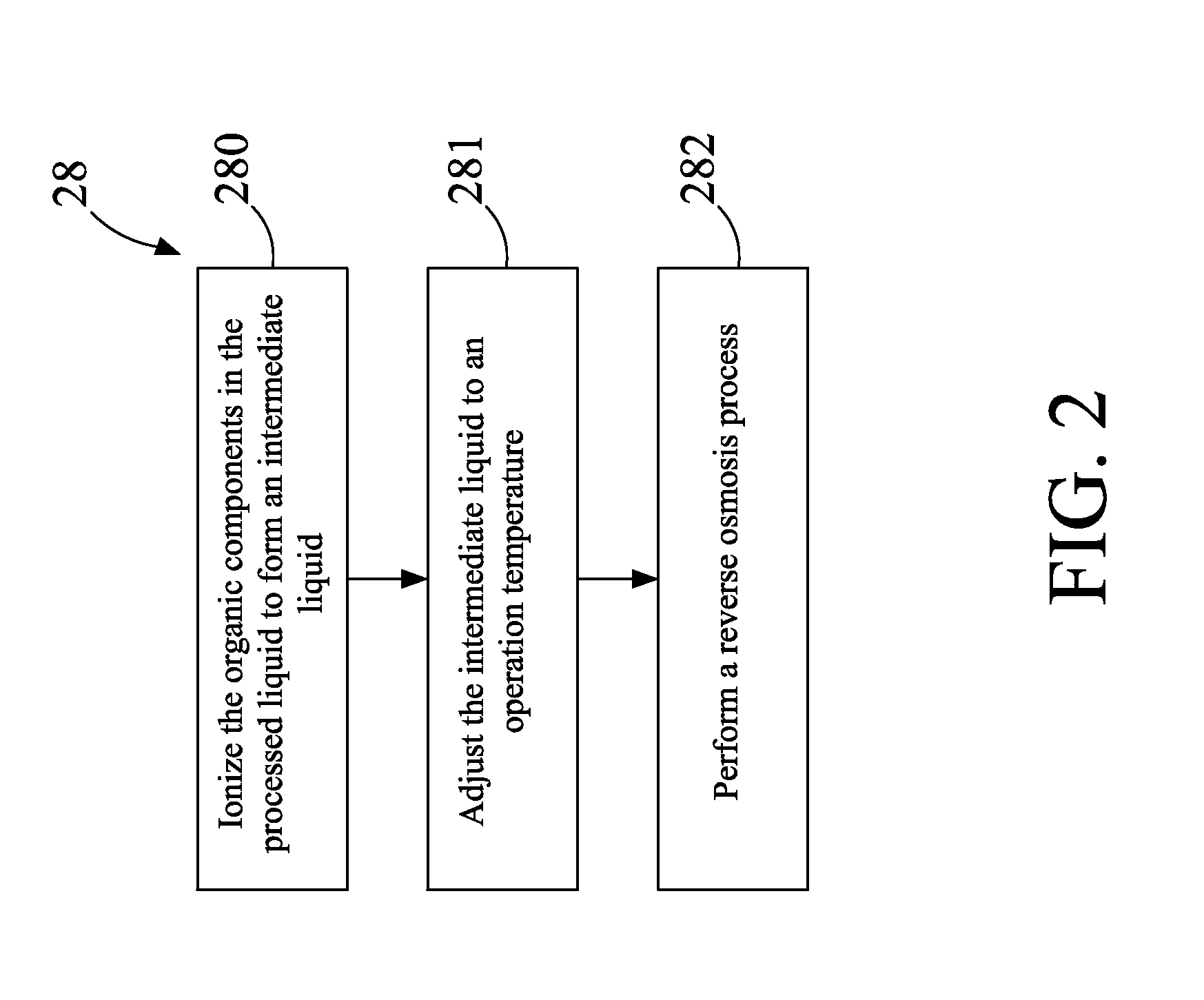System for wastewater treatment
a wastewater treatment and wastewater technology, applied in the nature of treatment water, liquid displacement, separation process, etc., can solve the problems of increasing treatment difficulty, increasing environmental protection problems, and single treatment technique cannot solve the problem completely, so as to reduce the energy consumed by secondary distillation, reduce the organic carbon content in the separated liquid, and reduce the effect of organic carbon conten
- Summary
- Abstract
- Description
- Claims
- Application Information
AI Technical Summary
Benefits of technology
Problems solved by technology
Method used
Image
Examples
embodiments
[0030]Referring to Table 1, the change in TOC concentration in the collecting unit with time without adding any reactant is shown. In the implementation conditions in Table 1, the flow rate of the wastewater entering the reduced pressure distillation unit is 1.68 ml / min, the temperature of the mist separation portion (T1, as shown in FIG. 4) is 85, the collecting unit is not heated, and no reactant is added to react with the distilled liquid.
[0031]
TABLE 1Time (min)FTOC (ppm)DTOC (ppm)Dr (%)VD (ml)T1 ( )0152100.00.000226015210105.00.6970851201521084.00.55120851801521083.00.55190852401521082.00.5426085
[0032]FTOC (ppm) is the TOC concentration of the wastewater, and DTOC (ppm) is the TOC concentration of the processed liquid. VD (ml) is the volume of the processed liquid. Dr (%) represents the TOC residual percentage of the processed liquid. It can be seen from the condition that the TOC concentration in the DTOC (ppm) column increases with time, that without adding a reactant, the TOC...
PUM
| Property | Measurement | Unit |
|---|---|---|
| concentration | aaaaa | aaaaa |
| flow rate | aaaaa | aaaaa |
| flow rate | aaaaa | aaaaa |
Abstract
Description
Claims
Application Information
 Login to View More
Login to View More - R&D
- Intellectual Property
- Life Sciences
- Materials
- Tech Scout
- Unparalleled Data Quality
- Higher Quality Content
- 60% Fewer Hallucinations
Browse by: Latest US Patents, China's latest patents, Technical Efficacy Thesaurus, Application Domain, Technology Topic, Popular Technical Reports.
© 2025 PatSnap. All rights reserved.Legal|Privacy policy|Modern Slavery Act Transparency Statement|Sitemap|About US| Contact US: help@patsnap.com



